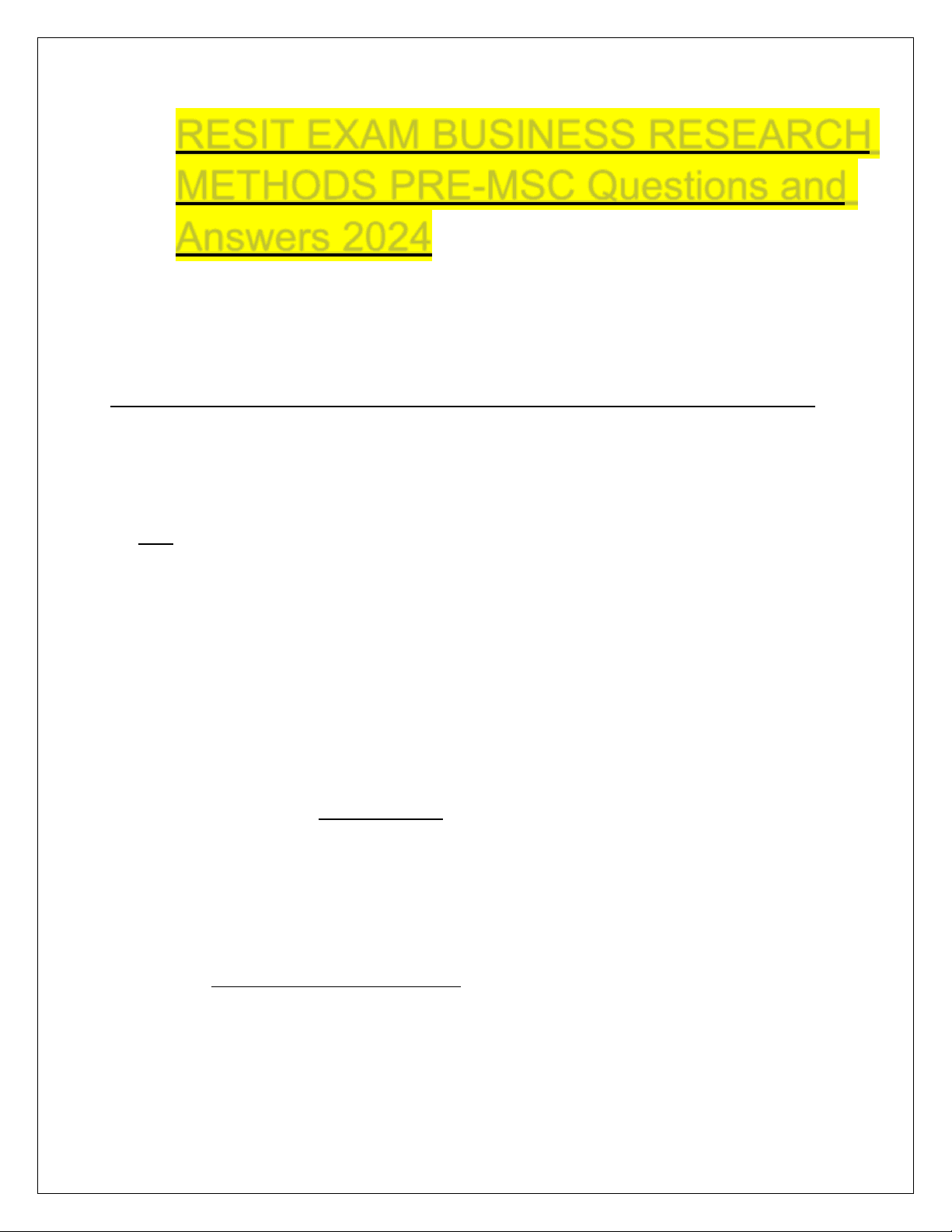
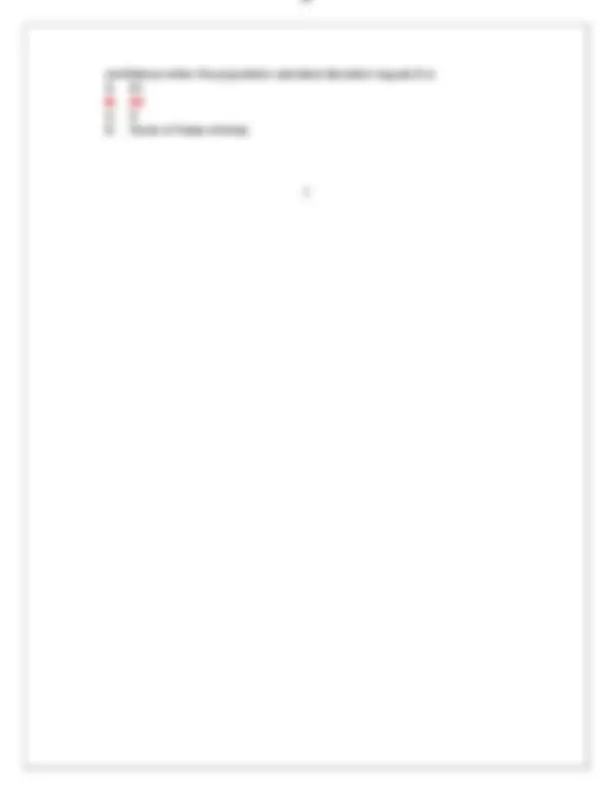
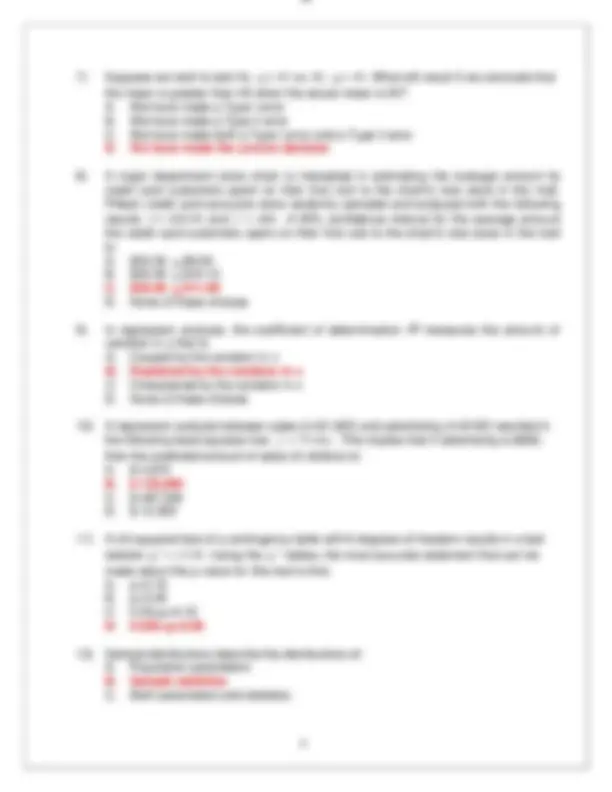

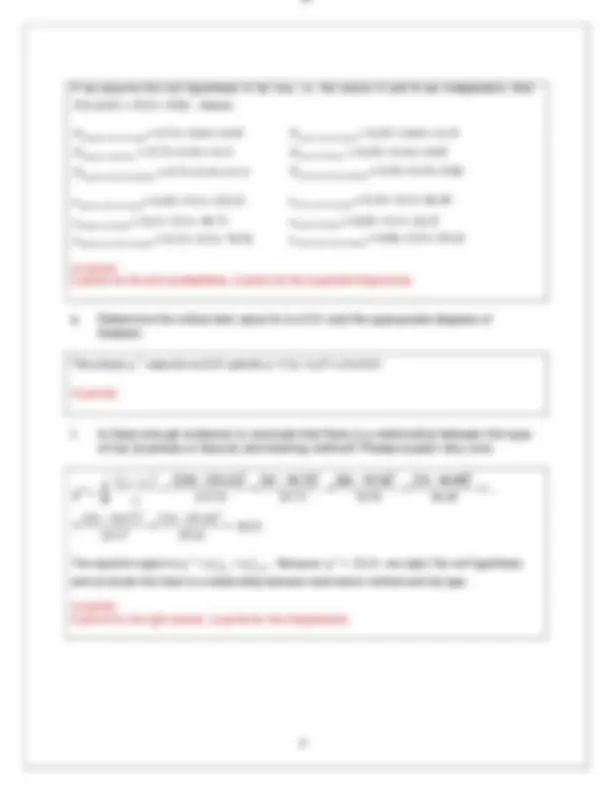
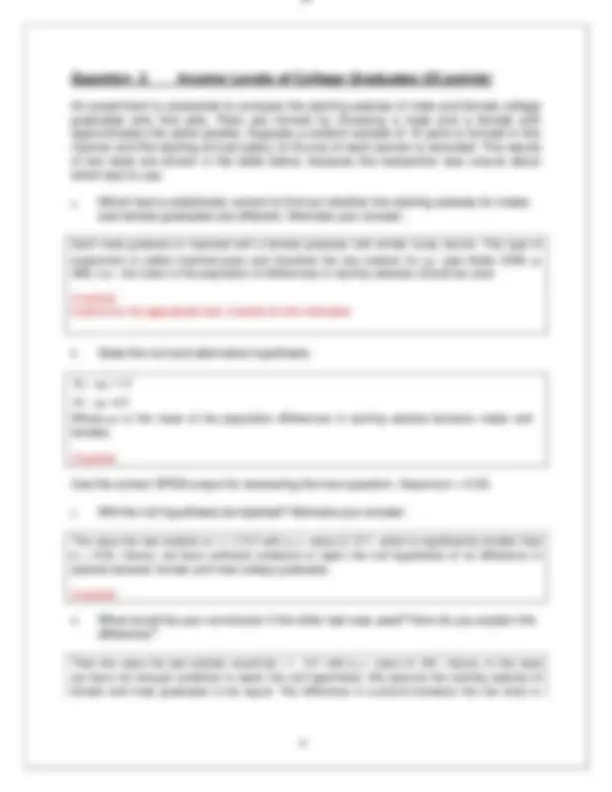
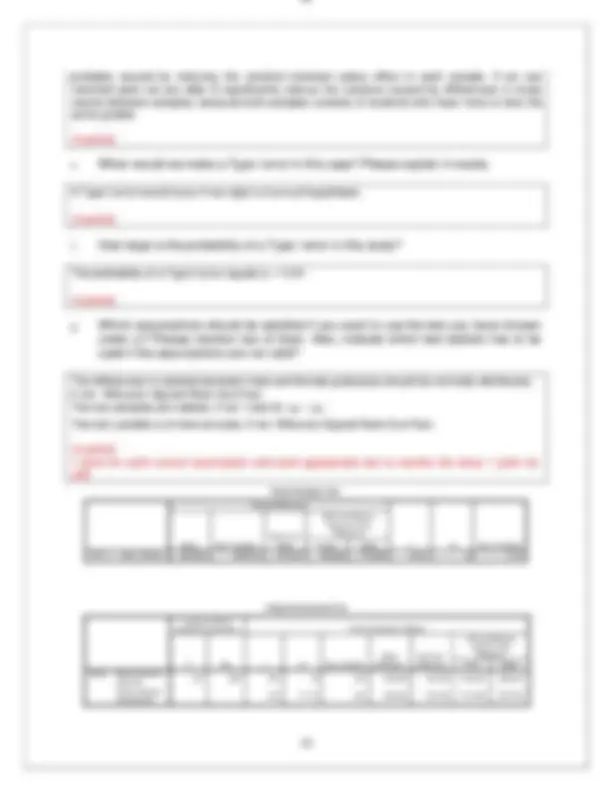


Study with the several resources on Docsity

Earn points by helping other students or get them with a premium plan


Prepare for your exams
Study with the several resources on Docsity

Earn points to download
Earn points by helping other students or get them with a premium plan
Community
Ask the community for help and clear up your study doubts
Discover the best universities in your country according to Docsity users
Free resources
Download our free guides on studying techniques, anxiety management strategies, and thesis advice from Docsity tutors
A resit exam for a business research methods course at the pre-master's level. It contains 20 multiple-choice questions covering topics such as probability, hypothesis testing, confidence intervals, regression analysis, and data types. The exam also includes two open-ended questions. Valuable practice and assessment materials for students preparing for this type of exam. The detailed questions and answer explanations can help students deepen their understanding of the key concepts and methods in business research. By analyzing this document, students can identify their strengths and weaknesses, and focus their study efforts accordingly. Additionally, the document could serve as a reference for instructors designing similar exams or reviewing course content.
Typology: Exams
1 / 10

This page cannot be seen from the preview
Don't miss anything!







Please read this first: ▪ This exam contains 9 pages. Please check this. ▪ The exam consists of 20 multiple choice questions and two open questions. ▪ Every multiple choice question has 4 answer alternatives. One of these four is the best alternative, and that is the one you should indicate on the answer form (the red form on your table). Please, follow the instructionson the form on how to use this form. Also fill in on the answer form: the version number of the exam you make, your student number, name, address, the name of the course (BRM), and the date. Do not forget to give your student number both in digits and stripes. ▪ The answers to the open questions can be written in the boxes below each question on the exam itself. ▪ Please write down your name and student number on both the exam (first page + pages with open questions) and the red answer form. ▪ Please show your student card upon request. ▪ If you have finished the exam, please hand in the exam itself and the red form! Grade (with reservation):
OQ is the number of points you score on the open questions (max. 45), and MCQ is the number of points you score on the multiple choice questions. MCQ = 45 number of correct answers − 5 15 lOMoAR cPSD| 38783425
D. None of these choices
Chi-squared test of a contingency table, because the travel agency wants to test whether a relationship exists between two nominal variables (i.e., reservation method and type of trip). (3 points) 1.5 points for the appropriate test, 1.5 points for the motivation H 0 : The variables trip type (business/leisure) and booking method are independent. H 1 : The two variables are dependent. (3 points) =
P travel agent =
P business (3 points) internet 513 P leisure =
P toll-free number
A travel agency wants to know whether there is an association between the type of trip (business or leisure) and the methods used by customers making airline reservations for their trips. The table below shows the number of air flight reservations by trip type and booking method for a random sample of 513 customers in the target market. Reservation method Business Leisure Used a Travel Agent 256 74 Booked on the Internet 41 42 Airline’s Toll-Free Number 66 34 a. Which test do you consider appropriate for answering this particular research question? Please explain why. b. State the null and alternative hypothesis you want to test. c. Calculate the (estimated) marginal probabilities for each reservation method and trip type. d. Calculate the joint probabilities and the expected frequencies for all possible combinations of trip type and reservation method if we assume the null hypothesis to be true.
The critical 2 - value for α=0.01 and df=(r-1)(c-1)=21=2 is 9.21. (3 points)
( f − e ) 2 i i i = 1 ei
k 70.76 96.
( 42 − 24.27) 2
( 34 − 29.24) 2 = 24.27 29.
The rejection region is 2 (^2) ^ , v = (^2) 0.01,2. Because 2 = 26.81, we reject the null hypothesis and conclude that there is a relationship between reservation method and trip type. (4 points) 2 points for the right answer, 2 points for the interpretation
e. Determine the critical test value for α=0.01 and the appropriate degrees of freedom. f. Is there enough evidence to conclude that there is a relationship between the type of trip (business or leisure) and booking method? Please explain why (not). If we assume the null hypothesis to be true, i.e. the events A and B are independent, then: P ( A & B ) = P ( A ) P ( B ). Hence: P business & travel agent = 0.71 0.64 = 0. P business & internet = 0.71 0.16 = 0. P business & toll-free number = 0.71 0.19 = 0. e business & travel agent = 0.45 513 = 233. e business & internet = 0.11 513 = 58. e business & toll-free number = 0.13 513 = 70. P leisure & travel agent = 0.29 0.64 = 0. P leisure & internet = 0.29 0.16 = 0. P leisure & toll-free number = 0.29 0.19 = 0. e leisure & travel agent = 0.19 513 = 96. e leisure & internet = 0.05 513 = 24. e leisure & toll-free number = 0.06 513 = 29. (4 points) 2 points for the joint probabilities, 2 points for the expected frequencies
A Type I error would occur if we reject a true null hypothesis. (3 points) The probability of a Type I error equals = 0.. (3 points) The differences in salaries between male and female graduates should be normally distributed, if not: Wilcoxon Signed Rank SumTest. The two samples are related, if not: t-test for 1 − 2. The test variable is of interval scale, if not: Wilcoxon Signed Rank SumTest. (4 points) 1 point for each correct assumption and each appropriate test to resolve the issue 1 point as well e. When would we make a Type I error in this case? Please explain in words. f. How large is the probability of a Type I error in this study? g. Which assumptions should be satisfied if you want to use the test you have chosen under c)? Please mention two of them. Also, indicate which test statistic has to be used if the assumptions are not valid? Paired Samples Test Paired Differences Mean Std. Deviation t df Sig. (2-tailed) Std. Error Mean 95% Confidence Interval of the Difference Lower Upper Pair 1 male - female (^) 400.000 434.613 137.437 89.096 710.904 2.910 9. Independent Samples Test Levene's Test for Equality of Variances t-test^ for^ Equality^ of^ Means F Sig. t df Sig. (2-tailed) Mean Difference Std. Error Difference 95% Confidence Interval of the Difference Lower Upper salary Equal variances assumed .197^ .663^ .547^18 .591^ 400.000^ 730.768^ - 1135.287^ 1935. Equal variances not assumed .547^ 17.715^ .591^ 400.000^ 730.768^ - 1137.062^ 1937. probably caused by reducing the variation between salary offers in each sample. If we use matched pairs we are able to significantly reduce the variance caused by differences in study results between samples, because both samples consists of students who have more or less the same grades. (4 points)